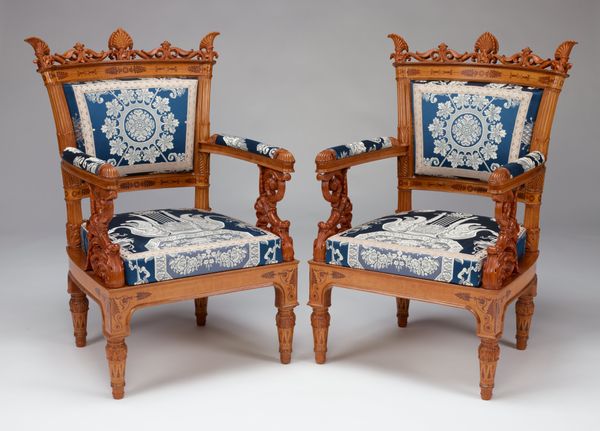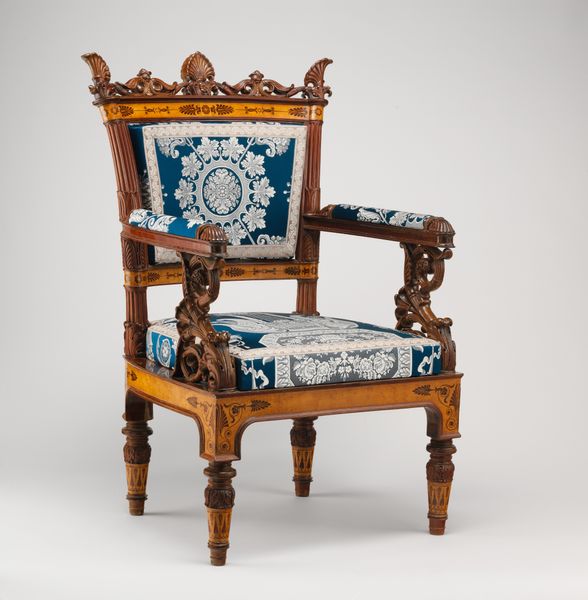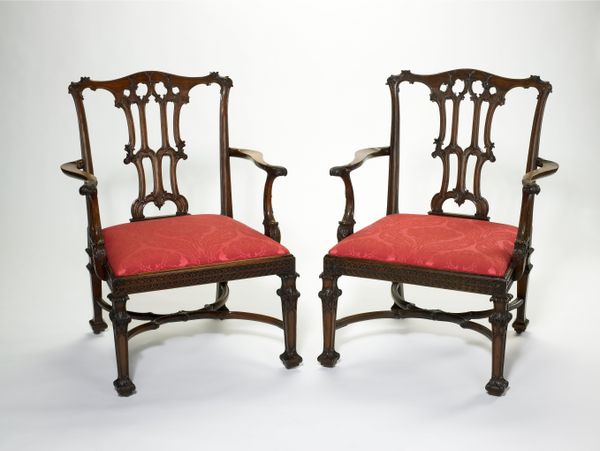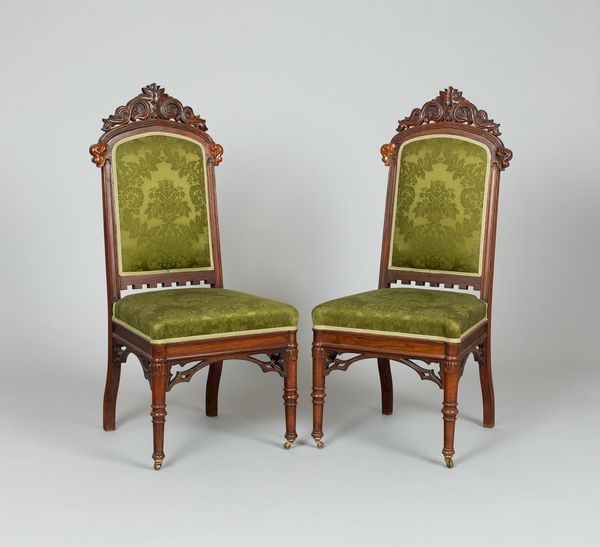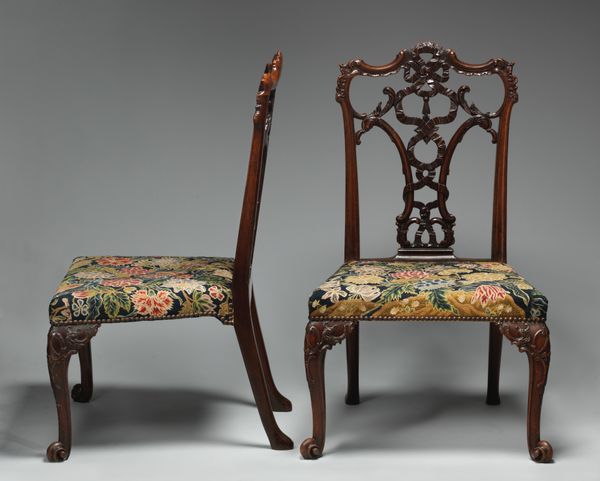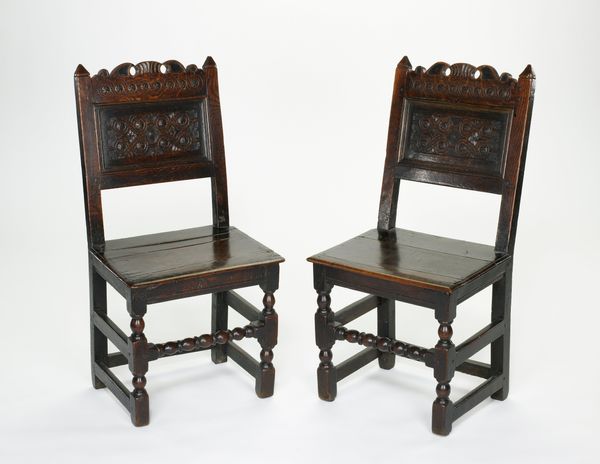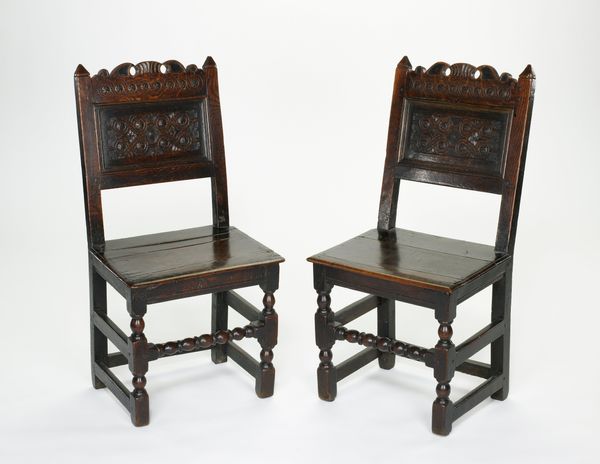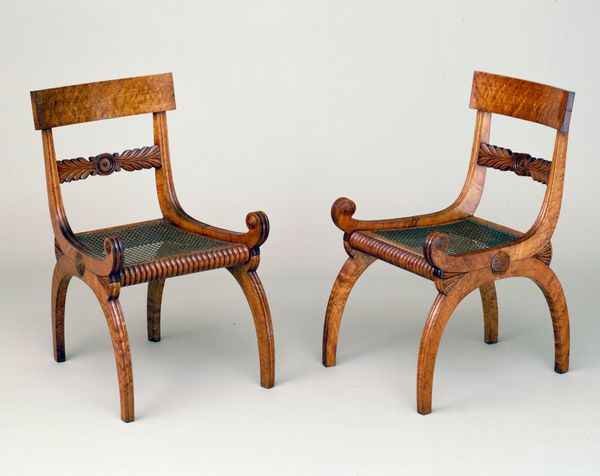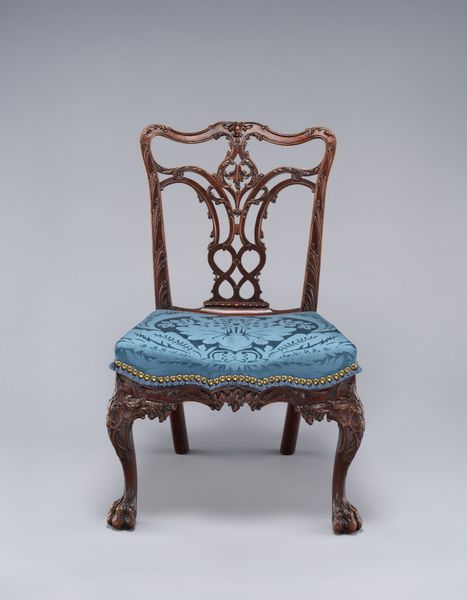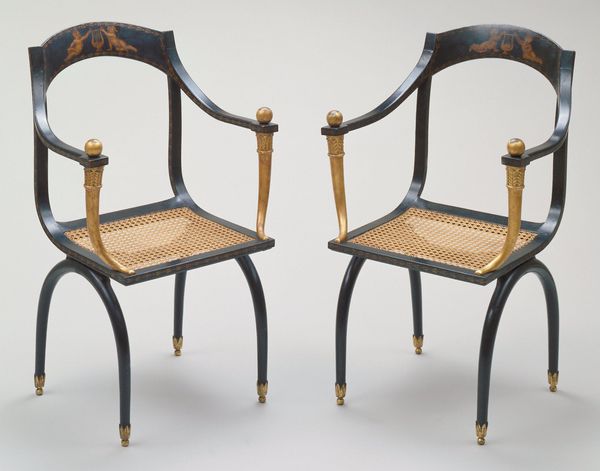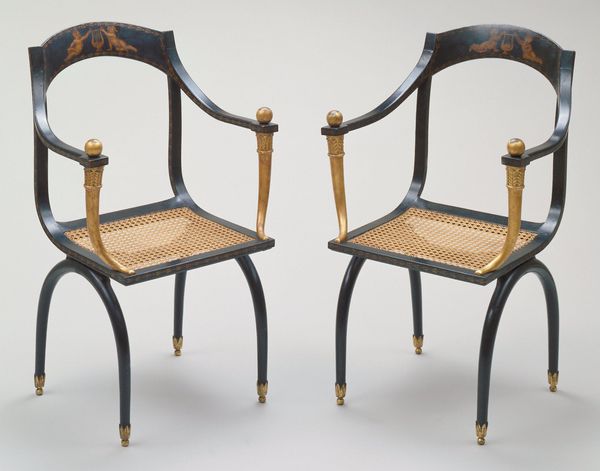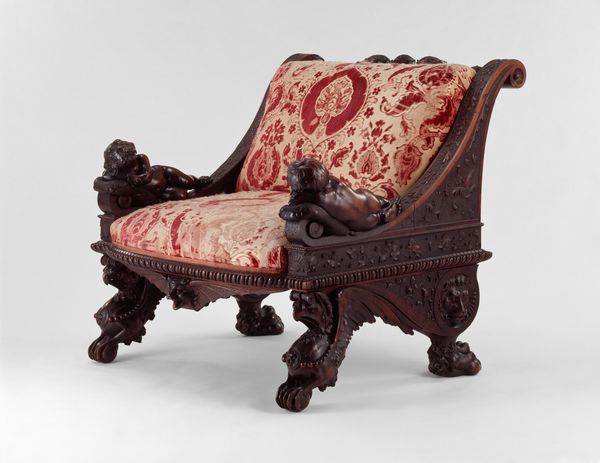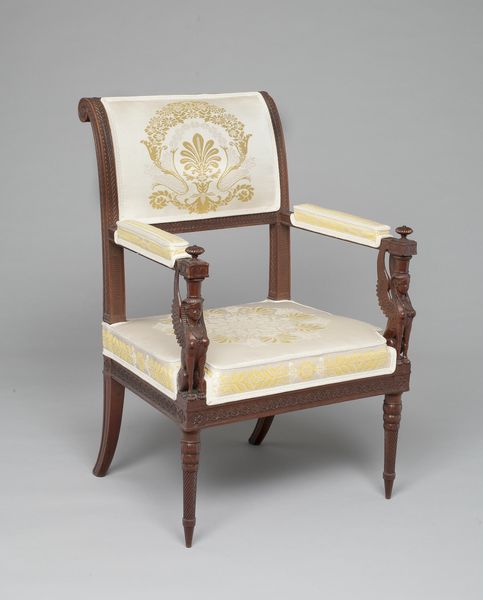
carving, wood
#
portrait
#
neoclacissism
#
decorative element
#
carving
#
furniture
#
ceramic
#
wood
#
decorative-art
#
decorative art
Dimensions: 42 5/8 x 26 1/2 x 22 in. (108.27 x 67.31 x 55.88 cm)
Copyright: Public Domain
Filippo Pelagio Palagi made this armchair, one of a pair, from carved and gilded wood in Italy. The armrests depict ancient Roman fasces, emblems of power, while classical motifs appear in the seat and back fabrics. The armchair is a product of its time, reflecting the fascination with classical antiquity that swept across Europe during the Neoclassical era. This interest in the past served as a way for those in power to legitimize their authority by associating themselves with the grandeur and stability of the Roman Empire. Palagi, who worked for royal patrons, likely intended these chairs to communicate the wealth and power of their owners. The decorative program elevates the sitter and the seat to something approaching a throne. By studying objects like this, we can see how art and design often reinforce existing social hierarchies. To better understand the context of this chair, research into the patronage system of 19th-century Italy and the political symbolism of Neoclassical design would prove invaluable.
